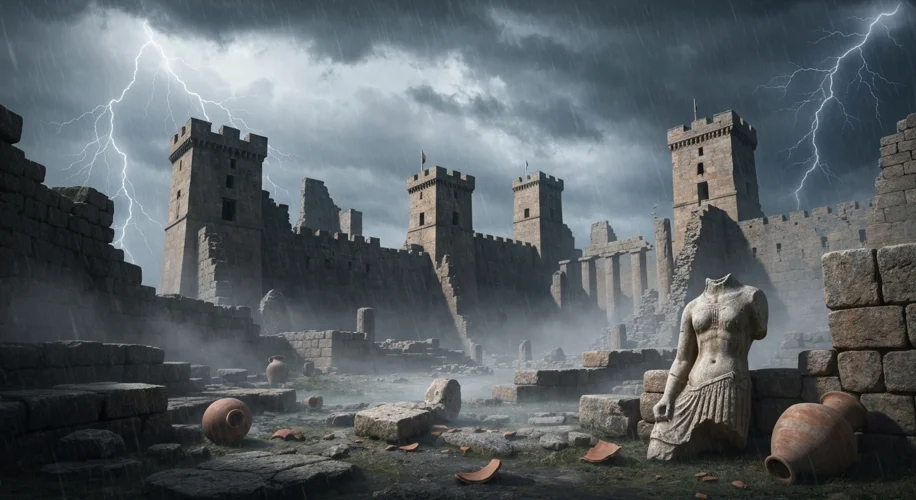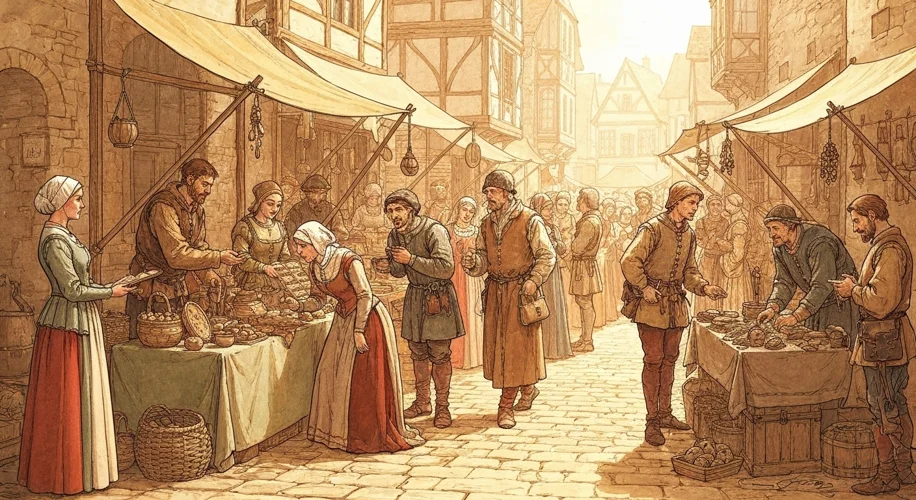The glory of ancient Greece, a tapestry woven with philosophical giants, epic poetry, and groundbreaking democracy, often overshadows a period shrouded in a profound silence: the Greek Dark Ages. From roughly 1100 to 800 BC, the vibrant Mycenaean civilization, with its monumental palaces and sophisticated writing system, collapsed, plunging the region into a near-disappearance of monumental architecture, large-scale trade, and even written records. What happened to this flourishing society, and how did its remnants forge a new identity in the crucible of this enigmatic era?
Imagine the scene. The grand citadels, like Mycenae and Tiryns, once bustling hubs of power and culture, lay in ruins, their massive stone walls eerily silent. The Linear B script, used to manage vast palace economies, vanished. The intricate gold jewelry, the finely crafted pottery – these markers of a complex society ceased to be produced on the same scale, if at all. This wasn’t a gradual decline; it was a cataclysm. The most widely accepted theory points to a confluence of factors. Waves of invaders, often referred to as the ‘Sea Peoples,’ ravaged the Eastern Mediterranean around the late 13th century BC. While their exact origins remain a subject of debate, their impact was undeniable. Alongside this external pressure, internal strife, drought, and the breakdown of established trade routes likely played significant roles in the widespread collapse.

In the wake of this societal upheaval, a radical transformation occurred. The centralized palace system, the backbone of Mycenaean life, disintegrated. Power dispersed, and communities became smaller, more isolated, and largely agrarian. This period, often characterized by a lack of archaeological evidence for large-scale organized society, is paradoxically a time of immense cultural gestation. While the grand narratives of kings and palaces faded, new forms of social organization, belief systems, and artistic expression began to take root.
The identity shift wasn’t a sudden event but a slow, often painful evolution. Without the unifying structures of the past, people began to coalesce around new centers – the emerging villages and later, the ‘oikoi,’ or households, which became the fundamental unit of economic and social life. Kinship ties and local loyalties gained paramount importance. The oral tradition flourished, preserving memories and myths that would later form the bedrock of Homeric epics.
The emergence of the polis, or city-state, in the later stages of the Dark Ages, marked a crucial turning point. These independent, self-governing communities, often centered around a fortified acropolis and a marketplace, represented a fundamental departure from the palace-dominated Mycenaean world. Each polis developed its own distinct identity, its own patron deities, its own laws, and its own traditions. This fragmentation, born from the ashes of collapse, ironically laid the groundwork for the diverse and dynamic Greek world that would later flourish.
Consider the humble iron. While bronze, the metal of the Mycenaean elite, became scarce due to disrupted trade, ironworking, a more accessible technology, began to spread. This democratized the availability of tools and weapons, subtly altering the social landscape. The adoption of the Phoenician alphabet, adapted to Greek, would eventually lead to the rebirth of literacy, but for centuries, the spoken word and the memory of bards carried the weight of history.
The legacy of the Dark Ages is profound. It was a period of loss, undoubtedly, but also a period of reinvention. From its ruins emerged a new Greece, one characterized by its independent city-states, its rich oral traditions, and its evolving sense of a shared Hellenic identity, forged not in grand palaces, but in the resilient spirit of its people. The silence of the Dark Ages eventually gave way to the vibrant chorus of classical Greece, a testament to the enduring power of adaptation and the cyclical nature of civilization.

